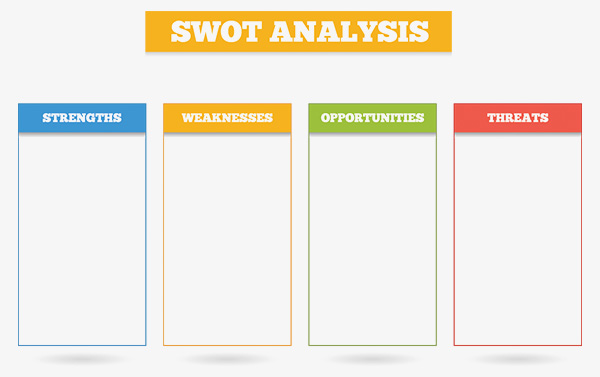Every marketer needs a documented marketing plan. As well as acting as a practical guide and benchmark of success, the process of creating one demands in-depth research and strategic thinking – the key to making better, more informed decisions and winning those customers over.
It doesn’t have to be elaborate – so don’t be put off – but it should be objectively sound. To help you get started, here’s a detailed rundown of how to structure it and what to include.

Section 1: Your current situation
This section should be a concise, realistic assessment of where your business currently sits in the market based on a SWOT analysis. By making you think in terms of your strengths, weaknesses, opportunities and threats, SWOT offers a structured way to evaluate your position and present it.
- Strengths/weaknesses – consider internal factors you have direct control over e.g. organisational structure, company culture and image, staff, operational efficiency and capacity, brand awareness, financial resources.
- Opportunities/threats – consider external factors within the environment your business operates you can’t control e.g. market trends, competitors, suppliers, partners, customers, new technology and the economy.
This analysis should help highlight your capabilities, the value of your product/service and your unique selling points (USPs).
Section 2: Your target audience
Here you need to clearly identify who your target audience is and what they look like. The more specific and segmented you can be the better.
Demographics are where you start e.g. are they male/female? Young/old? Where do they live? What’s their educational background?
Next you should describe your more detailed audience personas – there won’t just be one. Name them, detail their motivations, likes/dislikes, daily activities, purchasing patterns, preferred communication channels etc.
The better you understand your audience, the easier you can create marketing that resonates with them and the more likely you are to win them over.
Section 3: Your objectives
This section should outline what you hope to achieve. Importantly, don’t be vague. Your objectives should be specific, measurable, attainable, realistic, and time-bound (SMART). Importantly, your marketing goals should stem from your business goals.
Ultimately, your main business goal is to generate profit. So when coming up with your marketing objectives, you need to ensure they’re focused towards this end.
- Example of a poor marketing objective: I want more website visitors/leads/sales
- Example of a good marketing objective: I want to generate 5,000 more website visitors, 200 leads and 10 new customers in the next 6 months.
To help you come up with your objectives, work backwards. How much profit do you need to make? How many sales do you need to achieve it? How many leads do you need to make those sales? How will you achieve this?
Section 4: Your strategy and tactics
This is the heart of the plan and the place where you define your marketing mix or your 4Ps – product, price, place and promotion. To do this you need to consider the following:
- Product: What is your product/service message? g. the features and benefits
- Price: Are you high, mid or low end? g. Will you use discounts or command a premium
- Place: How will you distribute our product/service? g. Direct online or in store, franchises
- Promotion: Which channels will you use to communicate your message? g. advertising, word-of-mouth, social media, direct mail, PR, online content. How will you organise, create and monitor your efforts? What are your timelines? Who will be responsible?
Your decisions here should be informed by everything you know about your market position and your audience, as well as your objectives. In addition they should all work together to create a consistent customer experience.
Getting this right is essentially about putting the right product (or service) in the right place, at the right time for the right price.
Section 5: Your budget
This final section is where you set out how much you have or are willing to spend. Not an easy task. You might have questions like: how much is reasonable to invest? What kind of returns will I see? These are fair questions and writing this section should help you work out the answers.
Here are some rough overall revenue percentages for what you should be considering spending:
- Companies in business 1-5 years: 12-20 percent
- Companies in business more than 5 years and have some brand/market equity: 6-12 percent
(Source: Elevate My Brand)
As well as outlining an overall budget, you should also break it down. Detail not only how much you will dedicate to each marketing channel, but also how much you are allowing for upfront research, planning, testing, creative production and tracking.
And that’s it. Marketing plan done. Well, actually that’s not quite true. A marketing plan is never finished – it should always be viewed as a working document to be revised and updated based on the outcomes of your efforts.